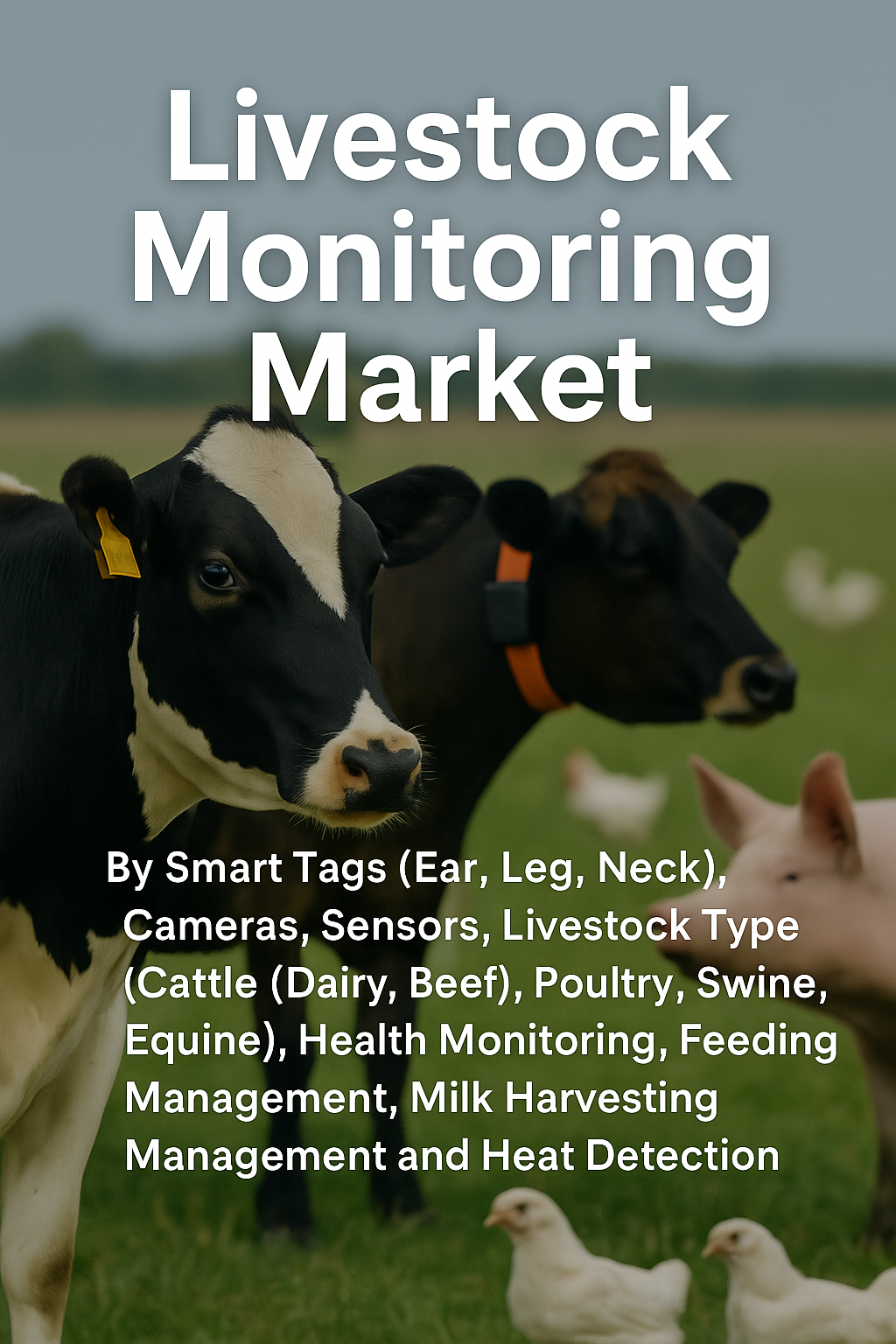Artificial intelligence (AI) is revolutionizing the livestock monitoring industry, driving significant growth and enhancing operational efficiency. By integrating AI with IoT devices, sensors, and data analytics, farmers can achieve real-time insights into animal health, behavior, and environmental conditions, leading to improved productivity and sustainability.
Market Growth Driven by AI Integration
The livestock monitoring market is projected to grow from USD 1.65 billion in 2025 to USD 2.57 billion in 2031, at a CAGR of 7.7%. This growth is fueled by the adoption of AI-driven solutions that offer real-time monitoring, early disease detection, and optimized resource management. Wearable devices like smart collars and ear tags, equipped with sensors and GPS technology, enable continuous tracking of livestock health and behavior, facilitating proactive interventions and reducing losses.
Download PDF Brochure @ https://www.marketsandmarkets.com/pdfdownloadNew.asp?id=72634532

Enhancing Operational Efficiency Through AI
- Real-Time Health Monitoring: AI-powered systems analyze data from wearable sensors to detect anomalies in vital signs, enabling early diagnosis of diseases and reducing mortality rates by up to 30%.
- Predictive Analytics: By leveraging historical data and machine learning algorithms, AI can forecast potential health issues and nutritional deficiencies, allowing for timely preventive measures and minimizing production losses.
- Automated Feeding Systems: AI optimizes feeding practices by adjusting rations based on individual animal needs, improving feed conversion rates by 10–15% and reducing waste.
- Labor and Resource Management: Automation of tasks such as milking, egg collection, and pasture rotation through AI-driven platforms reduces labor costs by 20–30% and enhances overall farm efficiency.
Promoting Sustainability and Compliance
AI technologies contribute to sustainable livestock farming by optimizing resource utilization and minimizing environmental impact.
- Emission Reduction: AI-assisted feed formulations, including additives like seaweed, can reduce methane emissions by up to 80%, aligning with global efforts to combat climate change.
- Water and Land Conservation: AI-powered irrigation and pasture management systems help reduce water consumption and prevent overgrazing, preserving soil health and biodiversity.
- Regulatory Compliance: AI facilitates adherence to animal welfare and food safety regulations by providing detailed records of livestock health and management practices, enhancing transparency and consumer trust.
Challenges and Considerations
Despite the benefits, the adoption of AI in livestock monitoring faces certain challenges:
- High Initial Investment: The cost of acquiring and maintaining AI-enabled devices and systems can be prohibitive for small and medium-sized farms.
- Data Security and Privacy: The collection and storage of vast amounts of data raise concerns about cybersecurity and the potential misuse of sensitive information.
- Technical Expertise: Effective utilization of AI technologies requires training and education for farmers and staff to interpret data and make informed decisions.
The integration of AI technologies in livestock monitoring is transforming the agricultural landscape, offering solutions that enhance productivity, efficiency, and sustainability. As the industry continues to evolve, addressing the associated challenges will be crucial to fully realize the potential of AI in revolutionizing livestock management practices.
